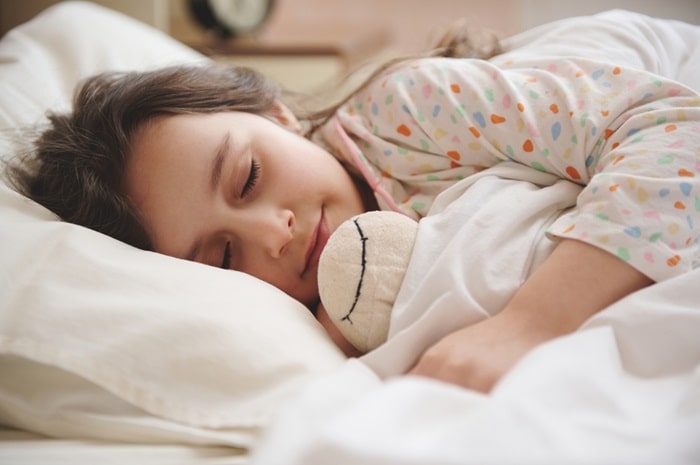In the journey of childhood development, sleep emerges as a critical pillar, influencing everything from physical growth to mental health and learning capabilities. As caregivers, our role extends beyond mere oversight; it involves crafting a sanctuary that nurtures sleep, ensuring our children can explore the realms of their dreams in comfort and safety. This exploration dives deep into the elements that constitute an ideal sleep environment for our young ones.
Understanding Children’s Sleep Needs
Children’s sleep requirements are as varied as their personalities, changing significantly as they grow. In the earliest years, infants need up to 17 hours of sleep daily, which gradually decreases to about 9-11 hours by the time they reach adolescence. This sleep is not merely a time of rest but a critical period for development, affecting everything from physical growth to cognitive abilities and emotional regulation.
As children transition from the constant sleep cycles of infancy through the evolving needs of toddlerhood and into the school years, their bodies and brains undergo remarkable changes that are deeply influenced by the quality of sleep they receive.
By the time children enter their teenage years, their sleep patterns shift once again, with a natural tendency towards later sleep and wake times. This shift, combined with lifestyle changes such as the demands of school, social activities, and an increasing use of technology, can lead to a reduction in sleep duration and quality.
It’s essential to understand these evolving needs to support children in getting the restorative sleep necessary for healthy development. Tailoring sleep environments and routines to match the specific stages of a child’s growth can make a significant difference in their overall well-being and ability to flourish.
Key Components of a Nurturing Bedroom Environment

Comfortable Bedding
The bed is the heart of any sleep environment. Selecting the right mattress, pillows, and bedding tailored to children’s unique needs is crucial. The aim is to ensure spinal support, temperature regulation, and comfort. A mattress that conforms to the child’s body shape while providing adequate support is essential, as are breathable, soft bedding materials that enhance sleep quality without overheating.
Lighting and Atmosphere
Lighting plays a dual role in sleep hygiene. Natural light exposure during the day supports a healthy circadian rhythm, while dim, warm light in the evening signals the brain to produce melatonin, the sleep hormone. Integrating blackout curtains can mimic the natural darkness of night, aiding in uninterrupted sleep, especially during summer months when the days are longer.
Temperature Control
The ideal bedroom temperature for a child is slightly cooler than an adult’s preference, around 18-21 degrees Celsius. This cooler environment supports the natural dip in body temperature associated with sleep onset. Adequate ventilation, meanwhile, ensures a fresh air supply, crucial for maintaining an environment free from allergens and conducive to deep sleep.
Noise Control
Managing noise levels can significantly impact sleep quality. For some children, consistent white noise or soft lullabies can mask disruptive sounds, providing a soothing backdrop for sleep. For others, absolute quiet is necessary. Tailoring this aspect to your child’s preferences can transform their sleep experience.
Creating a Positive Sleep Routine
Establishing a bedtime routine is perhaps one of the most potent tools in a parent’s arsenal. A sequence of calming activities before bed, such as a warm bath, reading a story, or gentle stretching, can significantly ease the transition to sleep. Consistency is key, as it reinforces the body’s sleep-wake cycle, making it easier for children to fall asleep and wake up naturally at the same times daily.
Incorporating Sleep-Friendly Decor
The design and organisation of a child’s bedroom can have a profound impact on their ability to relax and unwind. Calming colours like soft blues, greens, and lavender can help foster a positive sleep environment for your child. Minimalism in toys and clutter reduces stimulation, helping the mind to settle. Personal touches that reflect the child’s personality can make the space feel safe and comforting, reinforcing a sense of security and belonging.
Leveraging Technology for Better Sleep
While technology often gets a bad rap in sleep discussions, when used judiciously, it can be an ally. For instance, sleep trackers can provide insights into sleep patterns, while apps designed to regulate screen time or filter blue light can mitigate technology’s disruptive effects. However, the key lies in balancing technology use with ensuring it doesn’t encroach on the tranquillity of the bedtime routine.
Crafting a nurturing bedroom environment for children is an art that combines understanding, care, and a touch of science. From the selection of bedding to the establishment of a soothing bedtime routine, every element plays a part in fostering restful, rejuvenating sleep. As we invest in creating these sanctuaries, we gift our children the foundation for healthy development and a lifetime of well-being.


